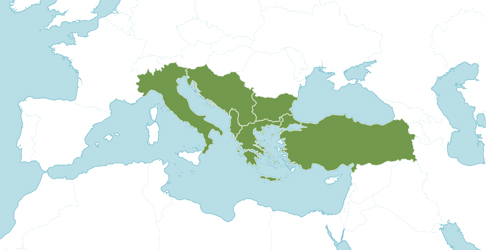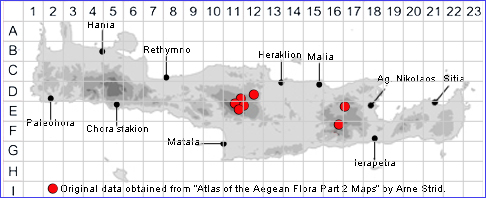SPECIES DESCRIPTION
UMBILICUS LUTEUS
Family and Genus:- See- CRASSULACEAE
Common Names:- Yellow navelwort
Homotypic Synonyms:- Cotyledon lutea, Umbilicus erectus, Umbilicus
vulgaris subsp. erectus.
Meaning:- Umbilicus (L) Naval, reference to the depession in the leaf surface
where the stem connects to the underside.
Luteus (L) Yellow, vile, of clay, muddy.
General description:- Herbaceous plant.
Stem:-
1) 20-60 cm, stout, erect, simple.
Leaves:-
1) Basal, up to 70 mm diam., triangular to round, cordate, blade flat, but with the
margin winding strongly inward and outward or having rounded teeth.
2) Cauline, progressively smaller, with shorter petioles, and dentate.
Flowers:-
1) Inflorescence, very numerous, more or less erect, in a dense raceme 8-25 cm,
sometimes branched at the base;
2) Peduncles, 1-3 mm.
3) Bracts, usually narrow-lance-shaped, small, entire or with a tooth on each side.
but sometimes broad. leafy, toothed.
4) Sepals, narrow, parallel-sided to lance-shaped.
5) Corolla 9-13 mm. tubular, bright or greenish-yellow, drying red-brown;
a) lobes, narrow-lance-shaped. narrowing gradually to a point, about equalling
the tube.
Fruit:-
Key features:-
1) Lobes, of corolla at least as long as the tube
2) Flowers, 9-13 mm.
Habitat:- Cliff crevices and ledges. open woodland, rocky outcrops in grassland.
(200-) 600-1400(-1900) m. on various substrates, but usually limestone.
Distribution:- Throughout mainland Greece and Peloponnisos. C & E
Mediterranean region. Rare on Crete currently known only from the Psiloritis and
Dikti massifs.
Flowering time:- May-July.
Photos by:- Steve Lenton
Native to:
Albania, Bulgaria, Greece, Italy, Kriti, Turkey, Turkey-in-Europe, Yugoslavia
Albania, Bulgaria, Greece, Italy, Kriti, Turkey, Turkey-in-Europe, Yugoslavia


GLOBAL DISTRIBUTION

Native